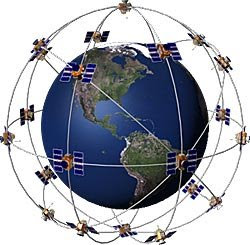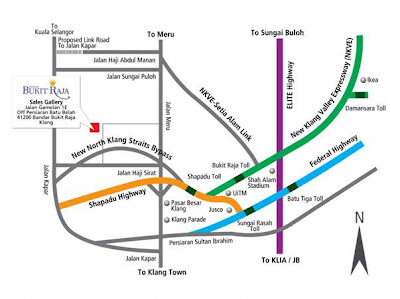Garmin Mobile PC software brings navigation to your PC for a reasonable price but with some drawbacks.
SIMPLE SET UP: Garmin Mobile GPS on a mini notebook with a Bluetooth GPS receiver.
With the popularity of Intel Atom-based mini notebooks that last five to six hours on a single charge, I recently started thinking about another possible use for it — as a GPS navigation device.
Of course, since no mini notebook currently on the market has built-in GPS, you can’t just get an out-of-the-box experience with it — for one, you need at least an external GPS unit which connects to your mini notebook via USB or Bluetooth.
If you already have a Garmin Bluetooth or USB GPS receiver, then you can use that, but the good thing is that Mobile PC isn’t limited to Garmin-branded GPS receivers.
The software works with all third party GPS units, but with one limitation. We’ll talk about this later.
The other requirement is that you have to download a local map. You can download one from www.malsingmaps.com, which has a free map that was last updated on February 2008.
The regularly updated maps are only available if you actively contribute to the website’s mapping effort.
By the way, there are shops in Kuala Lumpur which sell the software but it is a little cheaper if you buy from an online site like www.semsons.com/garmin.html.
Installation

If you have a notebook or mini notebook running Windows XP or Vista (with at least an 800 x 600pixel resolution) then the installation is pretty simple — just pop the supplied CD into an optical drive and install the software.
Once installed, you have to first connect your GPS (in my case using Bluetooth) and pair up the device with the notebook.
Once paired, start up Mobile PC and follow the steps to get the GPS working with the software.
Oh yes, here’s the limitation — if you’re using a Bluetooth or USB GPS unit that isn’t made by Garmin, the Mobile PC will be activated and tied to only the machine you install it on and will not accept activation on another machine.
However, if you have the Garmin GPS 10x or GPS 20x then the software instead looks for the unique identifier within the receiver and allows you to install the software on any machine, as long as you use the same Garmin receiver with the software.
Using the software

So now we get right down to the important bit — just how does Mobile PC perform for navigation?
Well, quite well actually and if you’re familiar with Nuvi series, the software is pretty much the same, presenting you with a very user-friendly “Where To?” and “View Map” options on the front page.
View Map is self-explanatory and brings you to a 3D view of the current map, with a little button on the bottom left hand corner that will switch to the flat 2D view with more detail.
UNIQUE: The 3D map interface in Garmin Mobile PC is where all navigation happens. If you don't like the 3D interface, you can still opt for the traditional 2D view.
Whether it’s the 2D or 3D view, you can zoom in and out of the map, although scrolling and changing orientation is only allowed in 2D view.
By the way, Mobile PC works with any notebook PC running Windows, and will work especially well with Tablet PCs, although it works with the touchpad and keyboard to navigate the interface as well.
“Where To?” is the starting point of all your navigation needs and will bring you to a list of icons — most notably, the “Home,” “Food, Hotels...” and “Favourites” icons.
Home, of course, is to navigate back to your home, and can be set the first time you click on the Home icon based on your current location or if you have the specific coordinates for your home.
Favourites is where you store your custom waypoints for easy navigation and reference later.
The strange quirk of the Malsingmaps and Mobile PC, however (and I hear this is a problem also in the Nuvi series) is that if you want to search for an address you have to click on “Where To?”, then click on, say, “Food, Hotels...” instead of Addresses directly.
For some strange reason, if you instead click on Addresses under the “Where To?” menu, you can only search United States addresses. Don’t ask me why — hopefully, this can be fixed in a later update.
Once your destination is chosen, you get voice prompts with turn-by-turn directions to guide you.
Like certain high-end Garmin Nuvi models, Mobile PC, by default, has a voice synthesiser which will speak the directions and road names in a robotic female voice.
DETAILED: The 2D view gives you a more detailed map for a visual search of points of interest.
The problem is that since Malaysian roads are actually pronounced in a different way from normal English words, the voice synthesiser usually makes such a hash of the road names that I can’t make sense of it.
In the end, I opted for the nice pre-recorded British female voice, which sounds a lot clearer when speaking and instead of saying “In 300m, turn left at Jeh-lan Kay-uh Air-Ay” (“Turn left at Jalan Kayu Ara”) it says “Turn left in 300m.”
Oh yes, if you have an Internet connection on the notebook, you also have access to some special Garmin online features, namely checking the weather in your local area, as well as checking international flights.
You get more features, however, if you are in the United States.
There are loads of other features as well, but the most notable one not directly connected with navigation is the Trip Computer, which gives you a car dashboard-like interface with a speedometer, odometer and other info on your trip, such as driving time, total time travelled (with GPS on), average driving speed and maximum speed travelled.
All the information could be useful if you want to keep detailed records of your trip or gauge the fuel consumption of your car.
Notebook issues
Of course, the software is just one aspect of using Mobile PC and the question is just how practical is it to use the software on a mini notebook?
Well, I own the Asus Eee PC 901, which together with the Atom processor and a fairly large battery, has battery life that’s long enough for almost any navigating you need to do in your car, so in terms of battery life, there’s no complaint there.
The one problem I had with using a mini notebook as a navigation device is that it’s still not quite as portable as it could be — unless you have a special stand made for it, you’re not going to be able to put the notebook anywhere where it’s easy for you to glance at.
I could only lay it down on the passenger seat and glance at it occasionally.
Another problem is that using the keyboard to input your destination is not that easy when it’s fairly dark outside.
Oh yes, I have a car stereo with a 3.5mm stereo input so I can connect the stereo output of the notebook to my car stereo so I can hear voice prompts clearly.
However, if you have no such connection on your car stereo, you have to also consider how loud your notebook can go before using Mobile PC.
My Eee PC 901 is actually loud enough to hear without connecting to my car stereo, but it’s one of the few notebooks that feature really good speakers.
Conclusion
Based on functionality alone, the Garmin Mobile PC software is excellent — it provides all you need for navigation as well as a few more features found only in high-end Garmin Nuvi devices.
The only problems really arise from the choice of notebook you install it on and whether you get loud enough audio or battery life to justify using it as a navigation tool.
So the answer is yes, Mobile PC is great, but you need to consider the limitations of your notebook before you use it.
Pros: Lots of features; easy-to-use interface; voice navigation; compatibility with Malsingmaps maps.
Cons: Using it on a notebook in dim light can be a bit fiddly.
Garmin Mobile PC
(Garmin Ltd)
GPS navigation software
System requirements: Windows 2000 SP2/XP/Vista, 256MB RAM, 1.3GB HDD space
Features: Garmin Online
Price: US59.90 (RM200)
Website: www.garmin.com







 Nuvifone M20
Nuvifone M20 Nuvifone G60
Nuvifone G60







































 Map to Bandar Bukit Raja.
Map to Bandar Bukit Raja.